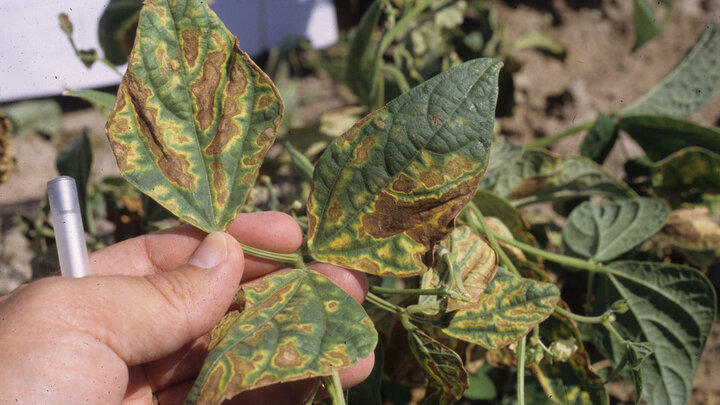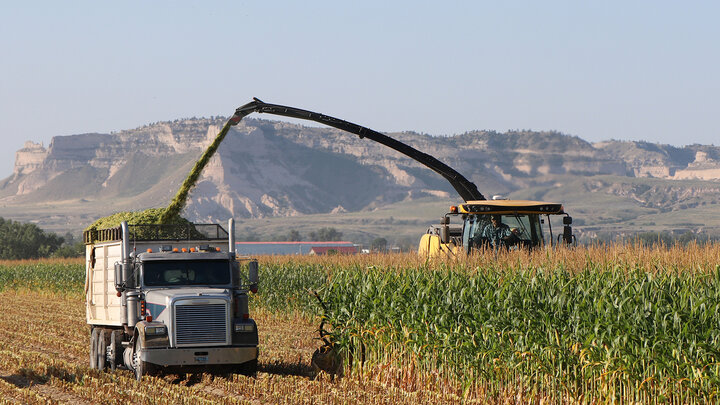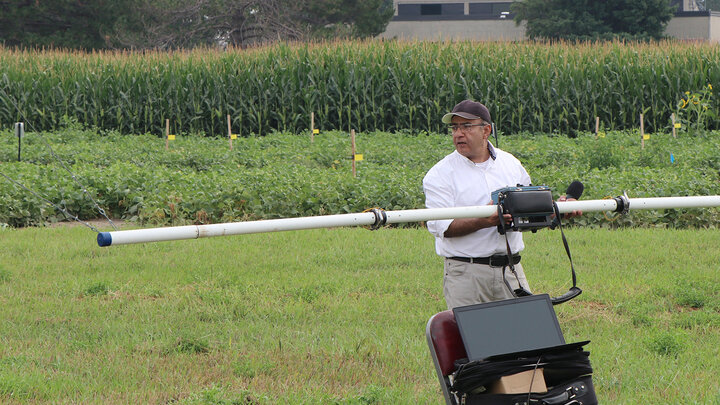With the recent thunderstorms, hail, and higher temperatures, growers may experience widespread bacterial disease problems in dry beans throughout the Panhandle. Growers should be on the lookout for the major bacterial diseases and be able to identify these pathogens.
Four major bacterial diseases affect Nebraska dry bean crops: common blight, halo blight, brown spot, and wilt. Each disease is caused by a distinct pathogen and favored by environmental conditions involving high levels of moisture.
These diseases are enhanced when plants are wounded by storms, hail, or any physical damage from humans, animals, or farm equipment. Bacteria cannot infect plants by themselves but instead require either natural openings in leaves or plant wounds to initiate infection. Storms with high winds and hail provide the perfect opportunity for bacteria to become established, as they can cause wounding and will move the pathogen and/or infected plant residues between and within fields.
Bacteria can survive in crop residues until environmental conditions favorable to infection occur. Daily temperatures that promote the development of each respective disease vary slightly:
- halo blight — less than 80°F
- brown spot — less than 85°F
- common blight and wilt — greater than 85°F
Making the correct diagnosis can also be critical to control. Because the efficacy of several control measures depends on the particular pathogen involved, the first and most important step is to accurately identify the pathogen in order to make the right management decision.
Management
Disease development and recommended management are similar for all these diseases. Unfortunately, bacterial diseases are not easy to manage, and good control options are limited. Chemical control using copper-based products is variable, depending on pathogen, weather, and disease pressure. Recently, we have seen some success in infested yields using products containing hydrogen dioxide as the active ingredient.
Genetic tolerance is available in a few cultivars, but complete disease resistance packages are difficult to obtain. The plant pathogen and dry bean breeding programs are both currently working toward producing new cultivars with better resistance to bacterial diseases. Several popular cultivars have good levels of resistance to certain bacterial diseases, but are more prone to infection by rust or white mold. Other cultural practices that may aid in management include:
- Avoid planting infected seed or beans near fields infested the previous year.
- Implement some form of tillage to accelerate decomposition of infested tissues, which limits bacterial survival.
- Avoid unnecessary wounding of plants. Any type of mechanical damage can open the door for bacterial pathogens to infect plants. Even walking through infected fields in the morning when wet with dew provides an opportunity for spreading disease. It is often better to wait until afternoon when the foliage has dried to enter fields for scouting or field operations.




